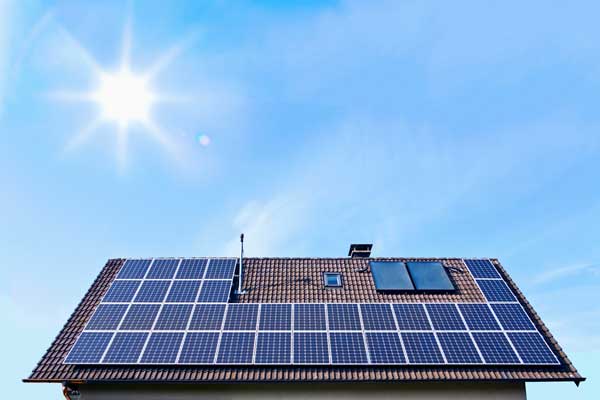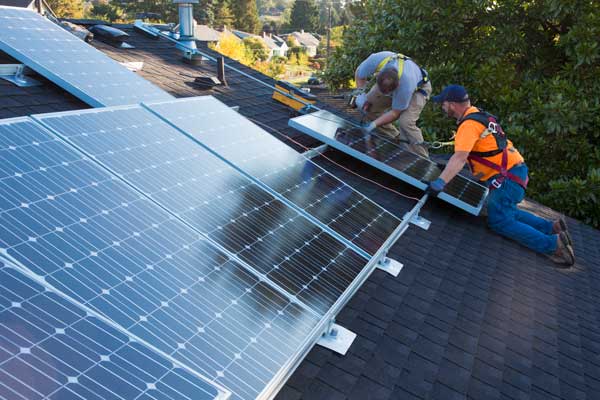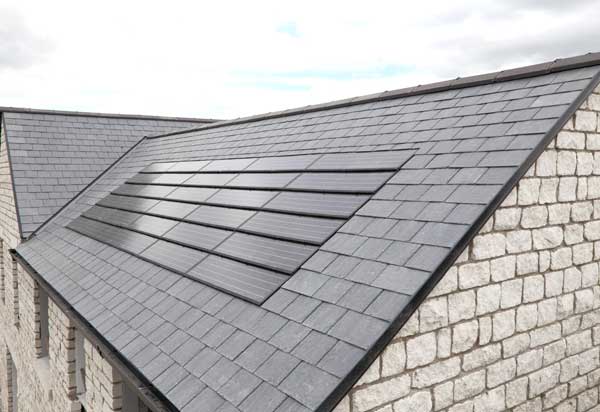If you are using a screen reader or other auxiliary aid and are having problems using this website, please contact us at 1.800.633.7077.
Is Solar Power Right for You?


Is Solar Power Right for You?
The price of solar power systems has fallen drastically over the last decade thanks to advances in technology and manufacturing. It may be a worthwhile investment for some, especially in the face of rising energy costs.
Requirements for Best Energy Production
- An unshaded area is needed where the system can be installed.
- The optimal roof angle is 30 degrees, but 15-40 degrees can work. Flat roofs can use tilt-up brackets to adjust the angle of panels.
- The best direction for panels/tiles to face is directly south, but southeast or southwest also work well.
Even if you do not have a suitable installation location on your property, you may still be able to have your power supplied by local solar panels. You can learn more on energy.gov by searching “community solar”.

Types of Residential Solar
Traditional Solar Panels
These panels are what most people think of when they hear about solar power. They are installed on top of existing roofs using brackets. These may allow for adjustments in the angle of the panels for optimal production. Solar panels have been widely used in residential buildings since the mid-2000s, so they are commonly available and well-tested.
Solar Tiles/Shingles
Rather than mounting panels on top, these are laid in-line with the roof and are designed to look similar to the rest of the roofing material. While they tend to be more expensive and take longer to install compared to traditional panels, they can be worthwhile if the property owner wants something that blends in. Installing them at the same time as a whole roof replacement is generally more cost effective than adding to an existing roof. These are newer to the residential market than traditional panels, so there are fewer venders that can install them.
Optional Add-Ons
Generally, solar systems will tie into the energy grid. This means you may still be without power during blackouts because a typical grid-tied system has an automatic shut-off in order to prevent electricity from being sent over damaged power lines, which could be extremely dangerous. If you want greater independence from the energy grid, there are several options available.
Solar Battery Backup
A solar battery stores the excess energy produced by your solar power system and saves it for later use. This allows you to use stored solar energy whenever your system is not producing enough to cover your full electricity needs like at night or during cloudy days. Battery systems will also continue to function during blackouts.
Special Inverters
If you want panels to continue to produce power during grid outages, even without battery backup, there are a few options for specialized inverters. Though they tend to be more expensive than a standard inverter, they are less than adding a battery system. This is an area where technologies are rapidly changing, so research to determine what would work best for your situation.

Pros & Cons
Pros of Solar Energy
- Highest energy production is mostly during highest electricity demand.
- Optional add-ons may help protect from power blackouts and brownouts.
- Estimated lifespan is 20-30 years, depending on type of system.
- Low maintenance because panels have no moving parts to wear down. The parts most likely to need maintenance are the inverters and cables, which are less expensive.
- Savings on energy bills and you can potentially even receive money back for surplus energy (depending on the local utility).
- Installations on flat roofs may use ballast systems that don’t require roof penetrations.
- Possible to increase the resale value of the property where they are installed.
- Local and federal incentives may help recoup some of the cost more quickly.
Cons of Solar Energy
- There can be a large up-front cost unless you finance or lease the systems.
- A lot of battery storage is usually needed to take a building fully off-grid.
- A powerful system may need substantial roof space.
- Some people don’t like the look of panels.
- Installation on angled roofs may require adding penetration points to the roof.
- Some utilities either don’t offer or limit the amount of excess power buybacks.
Visit energy.gov/solar to learn more.
Need help covering the up-front costs? Consider a CEFCU Home Equity Line of Credit